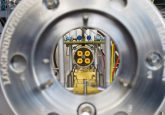Biomarker of infection identified in breath
Using GC and MS methods, researchers have identified carbon monoxide in breath as an accurate biomarker of infection.
Researchers from the University of California Irvine (CA, USA) have used GC and MS to accurately identify carbon monoxide in breath as a biomarker of infection. The research was carried out on mice, and naturally produced carbon monoxide levels in the breath were found to correlate to inflammation levels. It is predicted that the development of this method will allow for non-invasive human tests to diagnose the severity of infection in a clinical setting.
The research, led by Alan Barbour (University of California Irvine), analyzed the level of volatile organic compounds in breath using GC and MS methods. The method was initially developed by the Rowland-Blake laboratory and has been previously implemented in studies of diabetes, cystic fibrosis and kidney failure.
The researchers studied mice infected with Borrelia hermsii. When compared to mice non-infected, carbon monoxide in the breath of infected mice was significantly greater. Once infected mice were treated with antibiotic (ceftriaxone), the carbon monoxide levels in the breath decreased along with the decreasing level of infection. The research team also deduced a correlating level of heme oxygenase-1 protein in serum and HMOX1 transcripts in whole blood. These observations highlight carbon monoxide and heme oxygenase-1 molecules as an accurate biomarker of infection.
This research highlights the potential of identifying the severity of infection that demonstrate a high inflammatory response through the analysis of breath samples, which is a significant clinical advance on the current use of invasive and time-consuming blood samples. “Using a breath analysis method like this could help physicians in the emergency room and ICU make critical decisions about serious infections more quickly than if they had to wait for blood tests to come back from the lab,” Barbour said.
Barbour and the team of researchers intend to progress this study through the use of human breath samples.
Source: Barbour A, Hirsch C, Langeroudi A et al.Elevated Carbon Monoxide in the Exhaled Breath of Mice during a Systemic Bacterial Infection. PLoS ONE 8(7) e69802 (2013).





